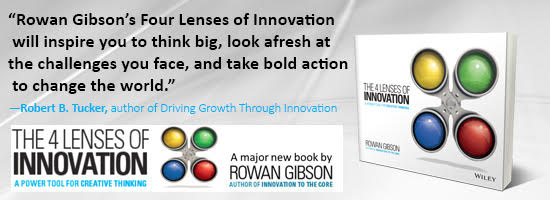Levers for Healthcare Innovation
 Healthcare in the United States is in transition. The historical fee-for-service model in the healthcare industry is being challenged and is unsustainable as the future nears. Change will continue with the demand for new approaches for healthcare. This change is immense, impacting nearly every aspect of the health system. Many system stakeholders, the government, institutions, medical providers, insurance payors and patients, are overwhelmed by the required change and are unsure where to begin.
Healthcare in the United States is in transition. The historical fee-for-service model in the healthcare industry is being challenged and is unsustainable as the future nears. Change will continue with the demand for new approaches for healthcare. This change is immense, impacting nearly every aspect of the health system. Many system stakeholders, the government, institutions, medical providers, insurance payors and patients, are overwhelmed by the required change and are unsure where to begin.
The healthcare system is complex. Complexity, however, present many levers for innovation that can be leveraged to produce positive change.
The levers for healthcare innovation fall into three goals or categories laid out by the Institute for Healthcare Improvement, namely, improve the patient experience, improve health outcomes and substantially lower cost. Becoming clear on the specific lever within each category and its impact on the system is the first step in identifying effective and innovative approaches for tomorrow.
Improve the Patient Experience
To improve the patient experience, it is best to ask the patient what their current experience is. It is only after knowing what the patient is going through, what their expectations are, and why they feel the way they do, patterns begin to emerge and can be addressed. Each population in the system needs a “voice†be it young or old, acute or chronic and everything in between. One group cannot speak for another.  The patient must be part of the conversation and understood in order to improve the patient experience. The needs and wants of a given patient population also need to be shared with all system stakeholders. Knowledge sharing assists in constructing a comprehensive picture of the experience of one population versus another and thus influences the resulting care model needed for that population.
Improve Health Outcomes
The three categories of healthcare innovation are connected and influenced by each other. By improving health outcomes, the patient experience changes as well as the long-term costs. Of the institutions making progress in improving health outcomes, the catalyst behind the success is the ability to measure health outcomes. Defined and measured outcomes then become input for additional innovation levers such as:
- Organization differentiation
- Integrated care team composition
- Clinical care decisions
- Clinician knowledge sharing and comparison
- Process and outcome interaction
- Value-enhanced cost reductions
- Payment shift from volume to results
Substantially Lower Costs
Many articles and online sources exist discussing the challenges and potential approaches to lowering healthcare costs. As with the previously discussed areas for healthcare innovation categories, a multiple prong approach to cost reduction will be necessary. The approach to lower costs is influenced by the advances in improving patient experience and improving health outcomes. Getting costs under control will require all the stakeholders in the healthcare system to participate in the cost conversation. Some areas for healthcare cost innovation include:
- Technology to reinvent care delivery
- Medical device and pharmaceutical management
- Workforce training and skills
- Government regulations, policies and processes
- New products and processes
- Care coordination
- Less elaborate site of care substitution
- Provider payment methods
- Insurance benefit design
- Market policy
- Tax policy
The many moving and interconnected parts of the current American healthcare system are ideal candidates for innovation. They are categorized into the interdependent areas of improving the patient experience, improving health outcomes and lowering cost. Many more exist than listed here. Keeping in mind that many approaches and care models are needed to satisfy the needs of a diverse population seeking care, the opportunity for innovation exists today.
image credit: bigstockphoto.com
Wait! Before you go.
Choose how you want the latest innovation content delivered to you:
- Daily — RSS Feed — Email — Twitter — Facebook — Linkedin Today
- Weekly — Email Newsletter — Free Magazine — Linkedin Group
 Daniel Nolan is the Founder & Chief Idea Guy/Principal Consultant at Denovo, an innovation consulting group, where he partners with clients to promote sustainable growth and build innovation capabilities. Daniel developed the Rapid Deployed Innovation System (RDIS) and Holistic Integrated Innovation Framework (HIIF). His company is dedicated to a holistic approach based on real world consulting experience, psychology of the creative process, and current academic research.
Daniel Nolan is the Founder & Chief Idea Guy/Principal Consultant at Denovo, an innovation consulting group, where he partners with clients to promote sustainable growth and build innovation capabilities. Daniel developed the Rapid Deployed Innovation System (RDIS) and Holistic Integrated Innovation Framework (HIIF). His company is dedicated to a holistic approach based on real world consulting experience, psychology of the creative process, and current academic research.
NEVER MISS ANOTHER NEWSLETTER!
LATEST BLOGS
The Incredible Shrinking Laptop
As technology advances and people’s demands for ever-thinner, ever-lighter laptops increase, more and more the thickness of a laptop is…
Read MoreA Revolution in Management Consulting?
Management consulting firms are built on a model that requires the maintenance of a bench of their people to staff…
Read More



